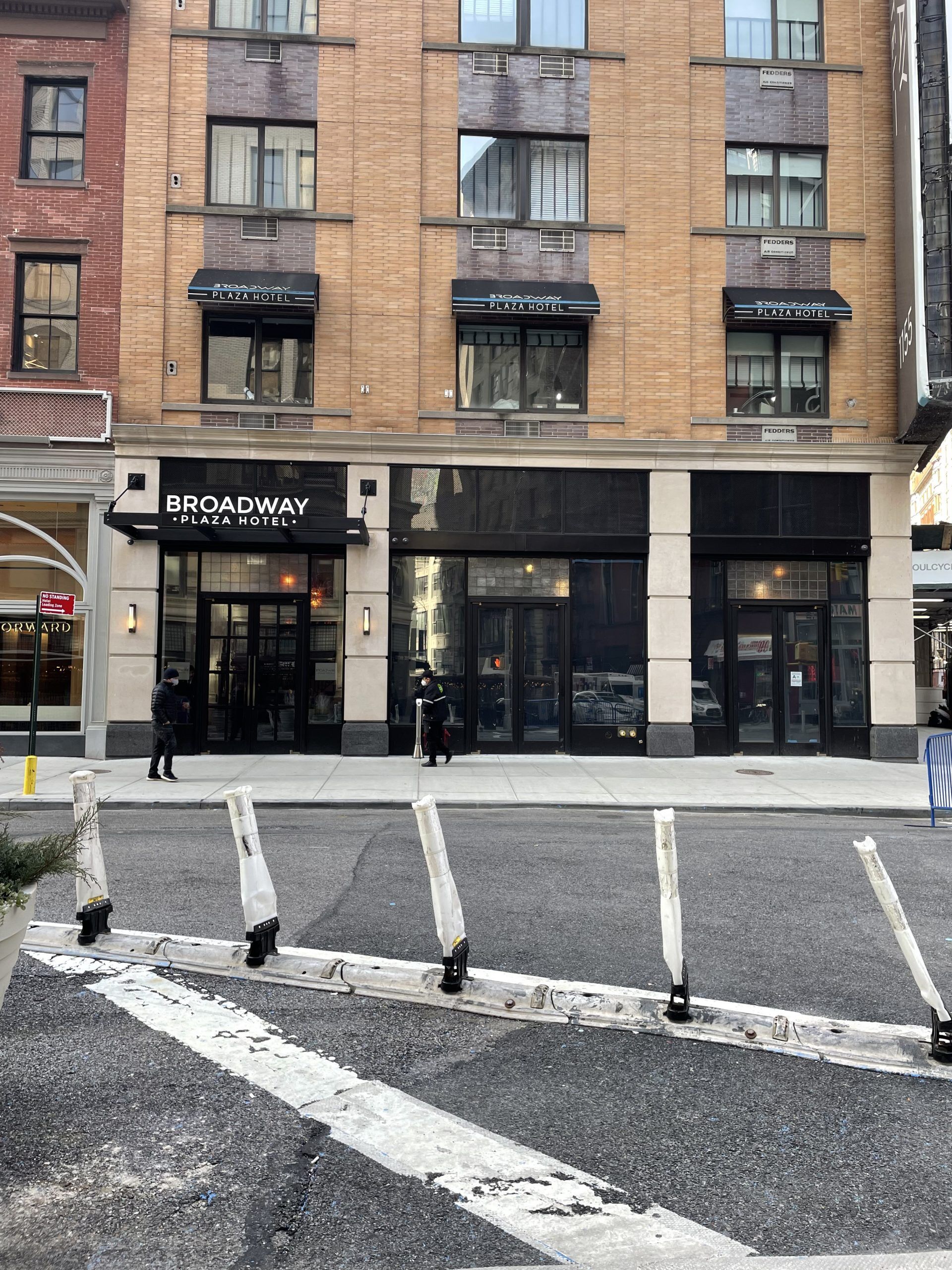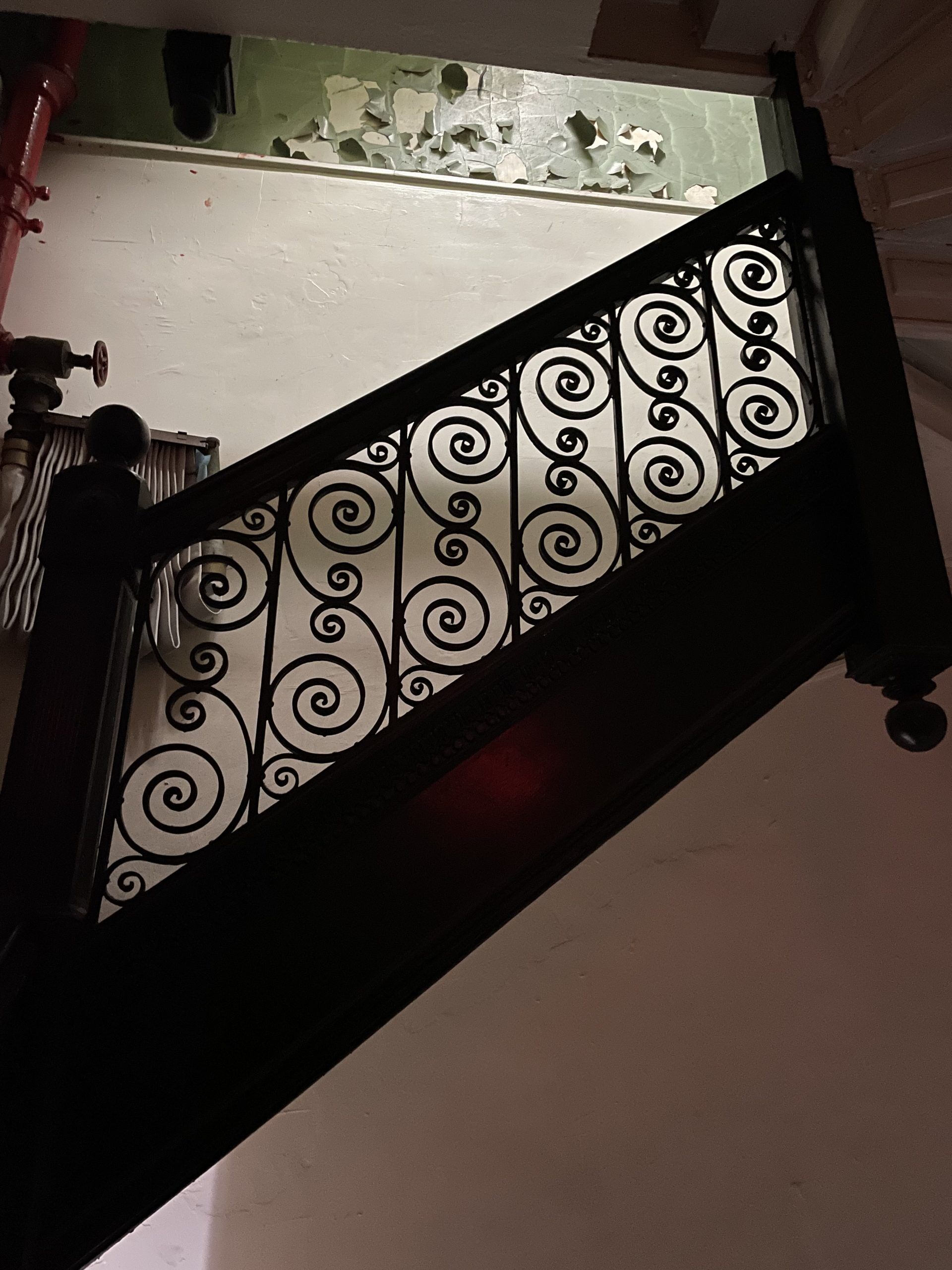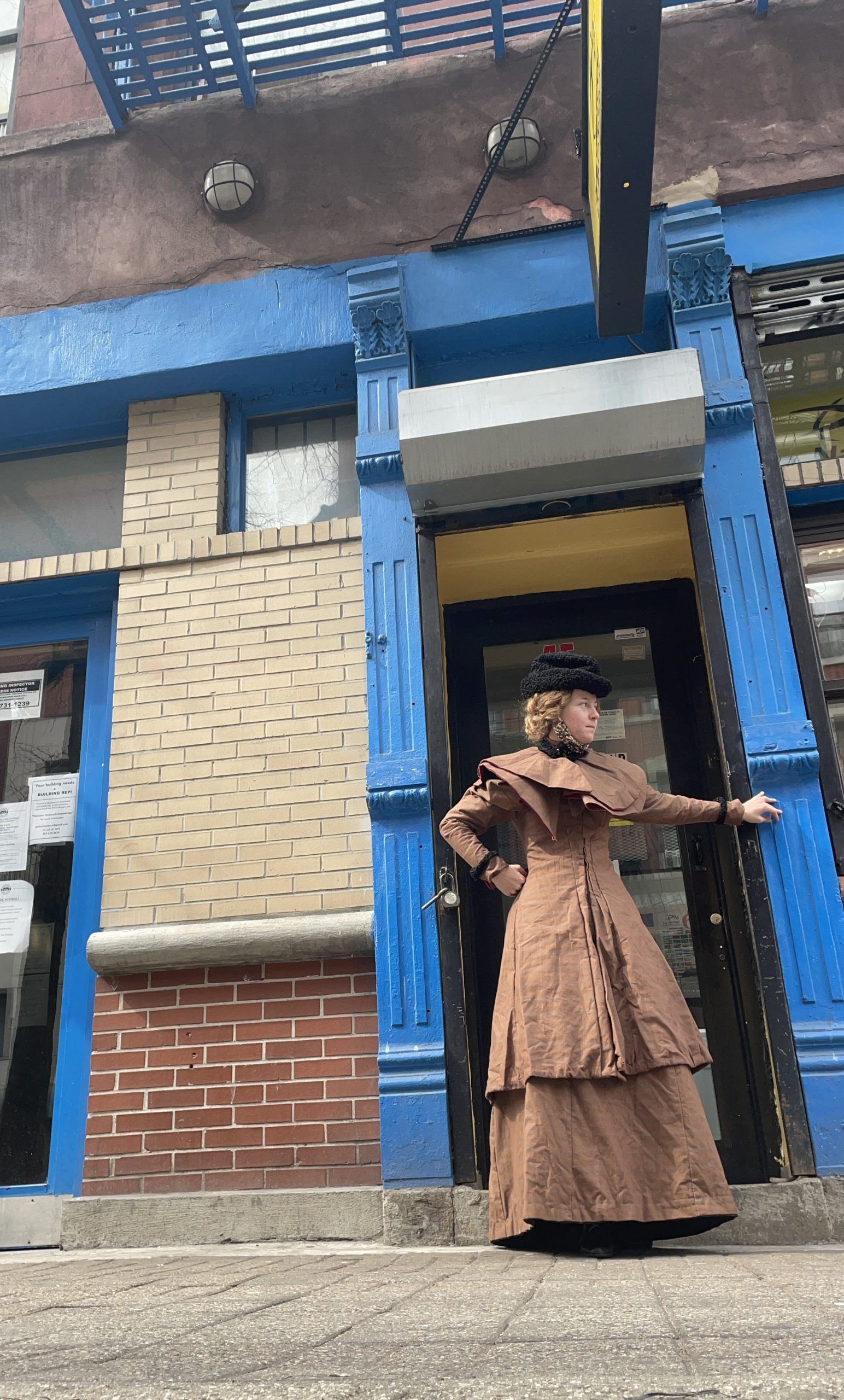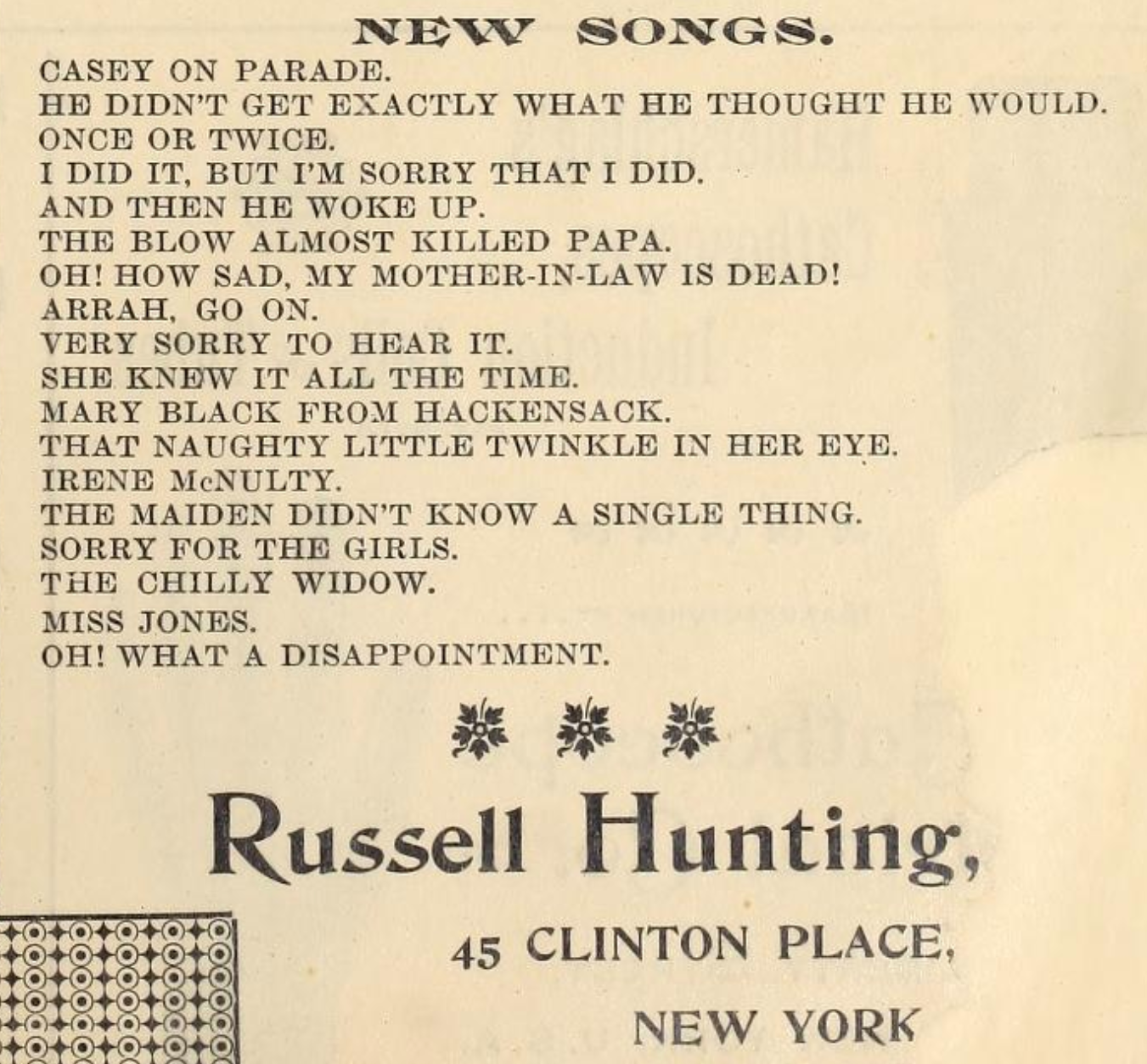
Even with all the adventures I had in NYC, as described in the previous three articles, there are still a few things I have not yet mentioned. I did plenty of more historical sightseeing that wasn’t entirely related to the Hager family. Any historian should be overwhelmed by the amount of history surrounding them while in New York, and even though this wasn’t my first time there, it was just as exciting as the first time nearly three years ago.
One of the most anticipated places I wanted to see was 1155 Broadway. This was one of the several New York addresses for the Columbia phonograph company. Columbia moved their headquarters from Washington DC to this Broadway address at the end of 1896, and it really took off from there. It was at this building that took up four addresses that many of the early acoustic records collectors look for today were made. This four-story lab was used between 1897 and approximately 1904. This building was significant in its location, being right in the middle of Tin Pan Alley, allowing for popular songs to come right from the source, before other labs elsewhere. Many thousands of popular discs and cylinders were made there, along with all the intrigue and drama that went on within Columbia in the late 1890s and very early 1900s.
With all this in mind, I made sure to walk by old 1155 several times while I was there. This time Shane Fleming and I got a more unique look at the building, being able to peer inside for the first time. Last time I was there I didn’t get to see what the inside looked like. It’s not very interesting, but there are a few things that remain as a silhouette of its colorful past. The overall construction of this massive building looks somewhat similar, with the old staircase in the same spot, and the brick walls remaining bare. Even with these still the same, the building looks very little like it used to. That anything remains from its past is remarkable. Perhaps one day a few of us historians can make our way into the basement, as that is where all the copying of records was done, and where a lot of the drama likely occurred. Maybe some treasures remain there.
Of course a promenade around Tin Pan Alley wouldn’t be complete without going by the famous blocks of 27th and 28th streets. Columbia’s famous lab was right on the corner of this historic block of 27th street, but the more famous block of Tin Pan Alley remains on 28th. This block has recently been designated as a historic landmark, something quite long overdue. There really isn’t anything quite like exploring the fully intact and nearly untouched row of buildings where thousands of classic songs were published. Even though many famous publishers like Witmark, Irving Berlin, Joseph Stern, and other, smaller publishers like Justin Ring also set up on this block.
This block was infamously one where some of New York’s most scandalous vices were commonly exchanged. Right across the street from these famous music houses were brothels, Turkish baths, drug dens, and saloons. Directly across the street from where Ring and Fred Hager set up their publishing firm was a famous brothel. How vibrant the block must have been when shows closed for the night, and all the musicians would flock to these entertainments. Even the paint and wooden structures of these buildings remain, and as I made my way up to a few of them, I made sure to rub my fingers on the old materials. What a joy it is to stand where other great musicians have stood.
After we spent some time on 28th, Shane and I made our way to a building that wouldn’t seem significant to most, but to me is quite interesting. He had special access to a building now at 1181 Broadway. This address was built in 1895, and in 1897 housed the New York office for Will Rossiter, a Chicago based publisher. It was here where Fred Hylands got his first pieces published in New York. This building is very well intact, but of course with intactness comes great old filth. Crusty wooden rails, art nouveau motifs, and dusty stairs, all of its old charm remains.

How wonderful it was to imagine Fred Hylands begrudgingly trodding up these stairs, grasping the same rails, scuffing his long boots, holding his first prospect into the safari that was Tin Pan Alley. He had just moved to the big city in late 1896, and was likely not aware that he would be making records in just a few months, that soon his accompaniment would become unknowingly immortal. We did this historical strolling around right before heading over to Colin Hancock’s to make disc records.
After the whirlwind of making disc records and spending several hilarious hours with Jerron Paxton, I had an interesting time getting back to where I was staying. What fun it was for me, a Californian, trying to figure out the subway after 11 at night. Anyone who has taken the subway at least a few times knows that the weekends are the time when repairs are made, so the schedule is often thrown out of order. I took the subway everywhere on this trip, so after becoming quite familiar with it, this hour trip back to where I was staying was quite some fun.

I was staying on West 49th street, just a few blocks from Times Square. My original plan of getting off at 42nd street was thwarted by a train that was stuck at that station, so at nearly midnight, I was forced to get out and walk through Times Square. By then I had been through there many times, but it never seems to get old, thinking of all the history associated with it, juxtaposed with all the bright lights and modern notions of it. At one time Fred Hylands set up one of his many publishing firms there, long before it became so blindingly bright. This didn’t last long of course, but it was one of many publishers that used to be set up in Times Square.
The next day I had a few hours to kill, so I decided to head back to my favorite part of the city, the Lower East side. In a previous article I spoke of going out to the building where Frank P. Banta was born, and this was the morning I did that, but before heading out to Greenwich village, I looked for another historic address. In the 1890s, the Lower East side was infamous for its countless bars, cheap theaters, strange people, and accessibility to vices.

Just one of many contributors to this world immortalized in the 1892 song “The Bowery,” was Russell Hunting. Although he didn’t originally set up his base of operations there, he soon moved it to a small off-street called Clinton. Hunting became famous throughout New York for being the procurer of much of the city’s smut on cylinder records. In the early 1890s, coin arcades were popping up “like mushrooms” it was said, and many of these establishments kept off color selections in their coin phonographs. Hunting attempted to corner this market, as arcade owners and the public couldn’t seem to get enough of them. Although he communicated often in code, and used as many as a dozen pseudonyms, his base of operations remained 45 Clinton street.
This building is still very much intact. Although I didn’t get to go inside, it was remarkable to see it. It was within those walls that thousands of taboo recordings and photographs were exchanged (Hunting’s assistant, Charlie Carson was a photographer, and most of his photographs were destroyed along with the records), and where Hunting’s famous arrest took place in 1896. This was truly a remarkable thing to see for me, as I have, for years, found the intrigue of Hunting and Charlie Carson’s story the most fascinating. It is because of characters like them that we think of the Lower East side in such the way that we do now.
And I think that’s a wrap folks! This was truly an extraordinary trip, and I cannot thank my friends enough for their kind hospitality and welcoming nature to a quirky Californian like me. Thanks so much to Don Gray Seubert, Brian Nalepka, Ken Bloom, Charlie and Lauren, Neal Siegal, Colin Hancock, and Shane Fleming.
Soon I will be back there soon to find and see more. Even with all that I did this trip, there is still much more to be done.
R. S. Baker has appeared at several Ragtime festivals as a pianist and lecturer. Her particular interest lies in the brown wax cylinder era of the recording industry, and in the study of the earliest studio pianists, such as Fred Hylands, Frank P. Banta, and Frederick W. Hager.






















